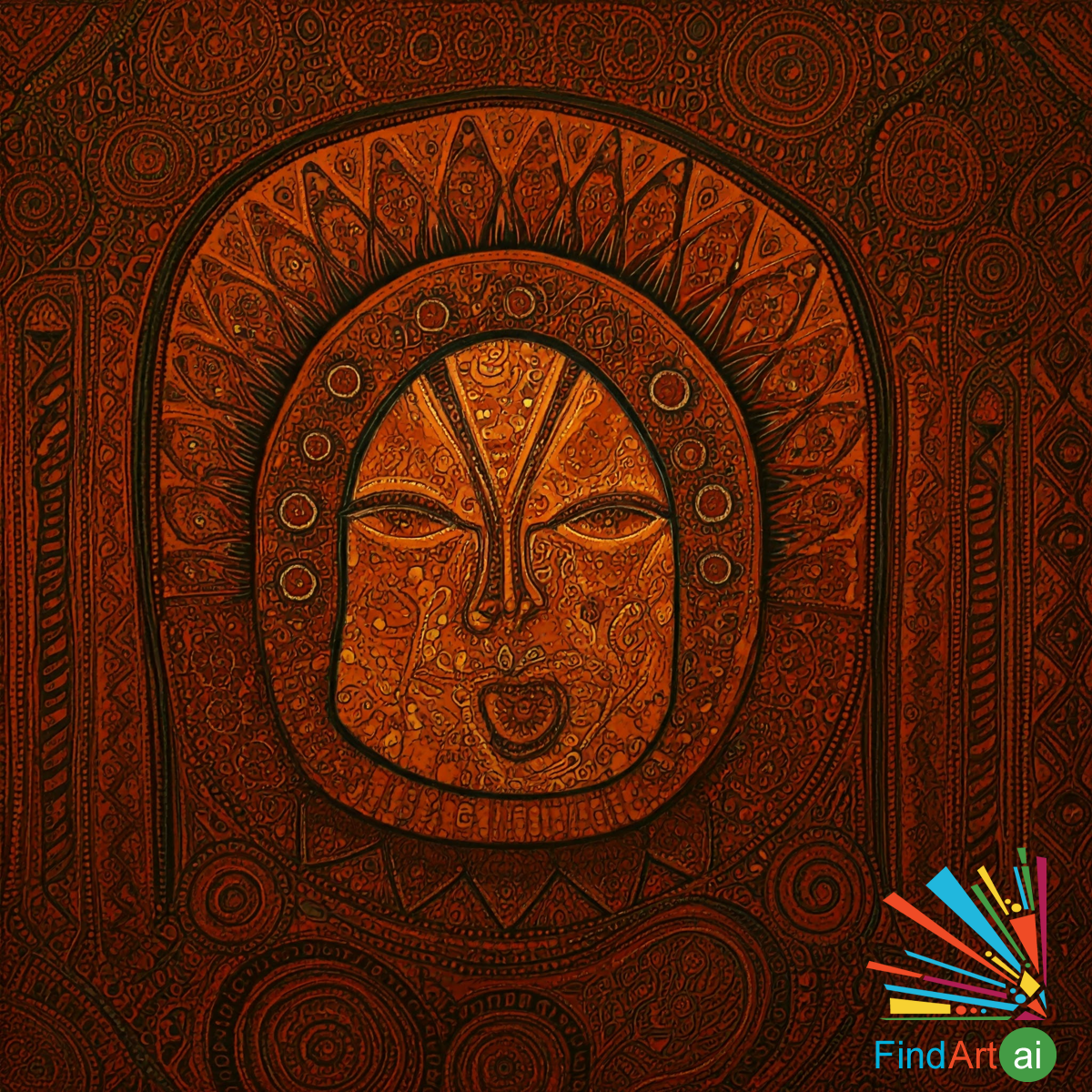African Tribal Art
African Tribal Art encompasses a diverse range of artistic expressions, including painting, sculpture, and textiles, originating from various cultures and tribes across the African continent. This art form is deeply rooted in cultural traditions, spirituality, and social functions, often reflecting the beliefs, practices, and identities of different communities.
Key Characteristics of African Tribal Art
- Cultural Symbolism
- African Tribal Art is rich in symbolism, with each piece often conveying specific cultural meanings, stories, or spiritual beliefs. Colors, shapes, and patterns may represent different concepts, such as fertility, ancestry, or social status.
- Use of Natural Materials
- Artists commonly use natural materials, including earth pigments, charcoal, and plant-based dyes, to create their works. These materials are often sourced from the local environment, reflecting a strong connection to nature.
- Expressive Forms and Patterns
- African paintings often feature bold, expressive forms and intricate patterns. Geometric shapes, stylized figures, and vibrant colors are prevalent, with patterns sometimes used to communicate specific cultural messages or identities.
- Example: Ndebele art from South Africa is known for its geometric patterns and bright colors, often painted on houses and textiles.
- Representation of Community Life
- Many artworks depict scenes of daily life, rituals, ceremonies, and communal activities, highlighting the importance of community and social relationships. These representations can serve as historical records and celebrations of cultural practices.
- Example: Himba paintings often showcase traditional dress and lifestyle, reflecting the community’s values and customs.
- Spiritual and Ancestral Themes
- African Tribal Art frequently explores themes of spirituality and connection to ancestors. Many pieces are created for rituals, ceremonies, or to honor deities, serving as a bridge between the physical and spiritual worlds.
- Example: Dogon art from Mali often incorporates spiritual symbols related to their cosmology and ancestral worship.
- Narrative Storytelling
- Artworks often tell stories, conveying oral traditions and myths through visual means. This narrative aspect helps to preserve cultural heritage and pass down knowledge across generations.
- Example: Ashanti goldweights feature intricate designs that tell stories of power and trade within the community.
- Functionality and Utility
- Many African art pieces have functional purposes beyond aesthetics. Objects such as masks, textiles, and pottery are often used in ceremonies, rituals, or daily life, blending art with practicality.
- Example: Bamana masks are used in dance and initiation ceremonies, playing a significant role in cultural practices.
Common Themes in African Tribal Art
- Identity and Ancestry: Art serves as a means of expressing cultural identity and honoring ancestral connections, reinforcing the importance of lineage and heritage.
- Nature and Environment: Many artworks reflect the relationship between communities and their natural surroundings, celebrating local flora, fauna, and landscapes.
- Ritual and Ceremony: Art is often created for specific rituals or ceremonies, highlighting the significance of these practices in communal life and spiritual beliefs.
Famous African Artists and Styles
- Yinka Shonibare
- A contemporary artist of Nigerian descent known for his use of Dutch wax fabrics and exploration of post-colonial themes, blending traditional African and Western influences.
- El Anatsui
- A Ghanaian artist famous for his large-scale sculptures made from recycled materials, including bottle caps, which reflect themes of history, culture, and globalization.
- Wangechi Mutu
- A Kenyan artist whose work incorporates collage and mixed media to address issues of gender, race, and identity, drawing from African traditions and contemporary themes.
- Ndebele Artists
- Artists from the Ndebele community in South Africa are known for their vibrant wall paintings and beadwork, characterized by geometric patterns and bright colors.
African Tribal Art is a diverse and multifaceted expression of cultural identity, spirituality, and community life. Through the use of symbolism, natural materials, and vibrant patterns, artists convey meaningful narratives and reflect the rich traditions of their respective cultures. This art form not only serves aesthetic purposes but also plays a vital role in preserving history and fostering connections within communities.
African Tribal Paintings with Connection to Ritual and Ceremony Theme
African Tribal Paintings with the Connection to Ritual and Ceremony theme are a vibrant expression o...

